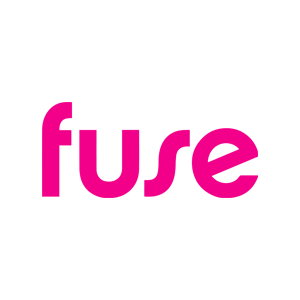Peer-To-Peer Connection Is Crucial For Learning
If 2020 was subject to user reviews, it would very likely fall into the "very bad, don’t recommend" category. However, on the plus side, it turns out that the pandemic’s impact on company culture hasn’t been as detrimental as we may have predicted.
In a study titled "The Pandemic and the Employee Experience" conducted by Quartz and Qualtrics, many people indicated that workplace culture had improved since the onset of the pandemic. The empathy that stemmed from gaining deeper insight into the personal lives and challenges of work colleagues was a big factor, as well as much improved and more frequent communication that has provoked a stronger sense of connection.
Somehow, and rather admirably, we’ve all managed to stick together, even when we’ve been forced apart. It’s a great testament to what peer-to-peer power can do for company culture even when companies revert to remote working, but quite frankly, it pales in comparison to the superpower potential of peer-to-peer driven Learning and Development—especially when compared to approaches that rely on the belief that AI without human connection is the future.
Through thick and thin, the peer-to-peer superpower is driving truly optimized corporate Learning and Development, even while we’re working remotely or dispersed widely across geographies. In this article, we’ll demonstrate how a few Fuse customers are harnessing the superpower combination of peer-to-peer trust with shared SME expertise and tacit knowledge. Read on to be inspired!
Anyway You Like’em
For those unaware of the term, tacit knowledge as defined by the Cambridge Dictionary is:
Knowledge that you do not get from being taught, or from books, but get from personal experience, for example when working in a particular organization. There are forms of tacit knowledge that develop among the employees of an organization. (Example) The team members reported that they had learned a lot from each other, especially tacit knowledge.
People learn from people, and even when you don’t have face-to-face personal contact and regular interaction, tacit knowledge transfer is still very much possible. It’s being fueled by platforms like Fuse, and driven by all of our customers.
Take Scandic, for example. Scandic is the largest Nordic hotel chain with over 18,000 employees dispersed over many locations. The company wanted to move on from its ineffective intranet to modernize its learning and culture, reaching out to every employee to create deeper connections between Scandic hotels.
At some point, Scandic may have considered a library of off-the-shelf courses entirely powered by an AI-recommendation-driven Learning and Development system, where an algorithm decides which external learning course would be appropriate for a given team member. But we’re confident they’re glad they didn’t.
With Fuse, Scandic was able to establish function and role-specific communities, like food and beverage for example. Using these channels on Fuse, experts from across the organization can share their knowledge, including community managers, who can share specific knowledge designed to support their business goals.
The power of peer-to-peer and tacit knowledge sharing is now demonstrably strong at Scandic. Some of the best content Scandic has on Fuse is beverage and wine schools shared by bartenders, as well as chef schools, where chefs can share, for example, the secret to making perfect scrambled eggs. A chef looking for tips on perfect scrambled eggs can conduct a search on Fuse and find a colleague that has made a short video dedicated to exactly this task, and ta-da: peer-to-peer, supercharged tacit knowledge is being shared, and colleagues are learning from each other.
Now, imagine a Learning and Development system entirely focused on longer external courses driven by AI-based recommendations, presenting people with content an algorithm thought they might like to learn, based on what they have learned already. So, instead of the perfect egg recipe, they may get recommended four more servings of health and safety courses. They would have missed out on learning how to make eggs extraordinaire, and the superpower of peer-to-peer and tacit knowledge simply wouldn’t have been there.
It’s not to say that there isn’t a place for AI—AI fits in absolutely. It fits on top of tacit and explicit knowledge, pushing and prioritizing the greatness of an organization's collective brain. It can help with suggestions and add extra granularity and context to searches. But without peer-to-peer being switched on, companies may be missing the most important audience for the AI to learn from—their own!
User-Generated Content Igniting People Performance
There are other reasons that Scandic’s food and beverage content works so well: people really like learning from other people’s experiences, and video is the next best thing to getting instruction face to face. In fact, Generation Z may prefer learning from a video, and our data shows that across 100 million interactions, videos are not only watched more than any other content types, but they also attract far more conversion, helping with more reflective and deeper learning.
So, we like learning from people’s experiences, and video is effective. But there is another reason that User-Generated Content works so well in Learning and Development. Users like to learn from other users when they share the same pain points, which ultimately makes the content really resonate.
Take the Fuse/Avon platform "Connect," for example. Connect is a platform that does what it says on the tin: it connects a million Avon representatives in a number of countries worldwide. However, it’s the User-Generated Content that’s really making the difference in the learning experience. Here’s what Avon Digital Experience Director Andy Stamps has to say:
There’s a wide range of content available and around 75% of it is user-generated videos or suggestions that gain traction with comments, likes and shares. This resonates in a way our own content doesn’t because it’s one beauty rep passing information to another beauty rep who needs it. That’s a great way to build peer-to-peer trust and it makes for a more engaging learning experience.
Across all our clients globally, 95% of the content created is not created by admins but by people within the business, and this fact is regarded as a core reason for engagement stickiness.
There we have it—peer-to-peer wins again.
Learn more about how Avon managed to create positive and habitual learning behaviors at scale—with a direct impact on the bottom line. Read the full case study.
We’re A Social Bunch
Now more than ever, storytelling is absolutely fundamental to company and employee growth, and the peer-to-peer connection has become crucial. According to research by Gallup, we’re a social bunch, and working from home can give rise to loneliness and isolationism for many remote workers. Throw a pandemic and some strict lockdown measures in there, and companies have their work cut out for them when it comes to keeping employees happy, engaged, and supporting business goals.
We’ve already established that the power of peer-to-peer is demonstrably strong not just in bringing people together, but also in making them feel connected. However, companies are only as strong as their leaders, and both Scandic and Avon back this statement up.
At Scandic, leaders were brought on to Fuse first, and at Avon, when sales leader engagement against beauty rep engagement in any one country was analyzed, there was a near carbon copy in correlation that showed when leaders were involved their teams were and vice versa.
So, while the peer-to-peer element is crucial, it’s important to lead from the top to encourage the best communities of practice and engaged learning. And remember, communities that learn together tend to stick together, creating an unbeatable culture of tacit knowledge sharing to support optimized business growth and performance.
So, What Can Companies Do To Encourage Tacit Knowledge Sharing And Peer-To-Peer Learning?
- First and foremost, consider whether your learning platform supports tacit knowledge sharing. Do you have a system in place that lets users easily create and share content?
- Consider the idea of communities within your learning system. Can you create specialist and role communities to foster a sense of peer-to-peer connectivity?
- Ask this: Can your users search for the content they really need and want?
- Prioritize getting leadership on board. Without great leaders, the superpower of peer-to-peer learning may be harder to harness. Getting buy-in from the leadership team is key.










